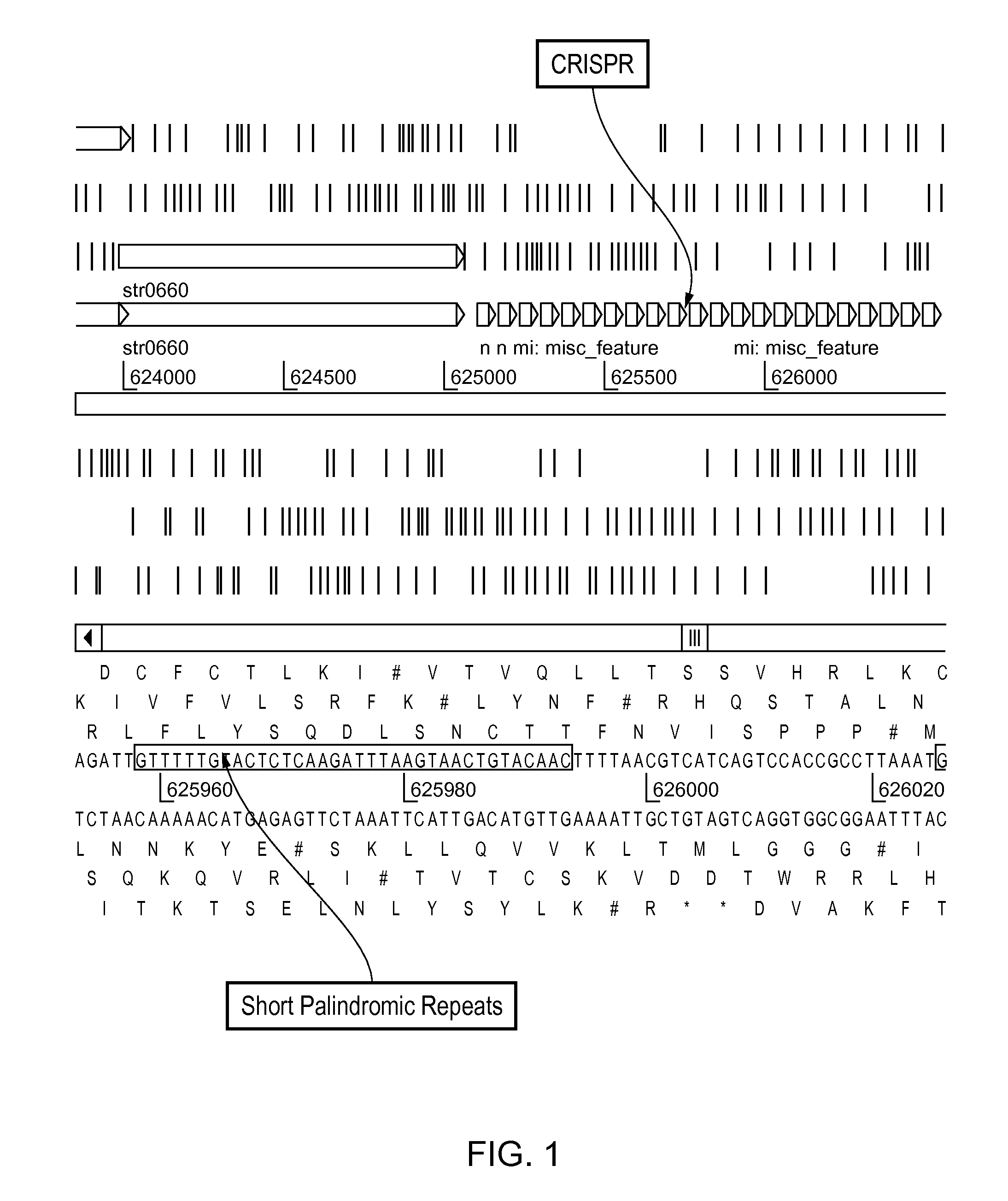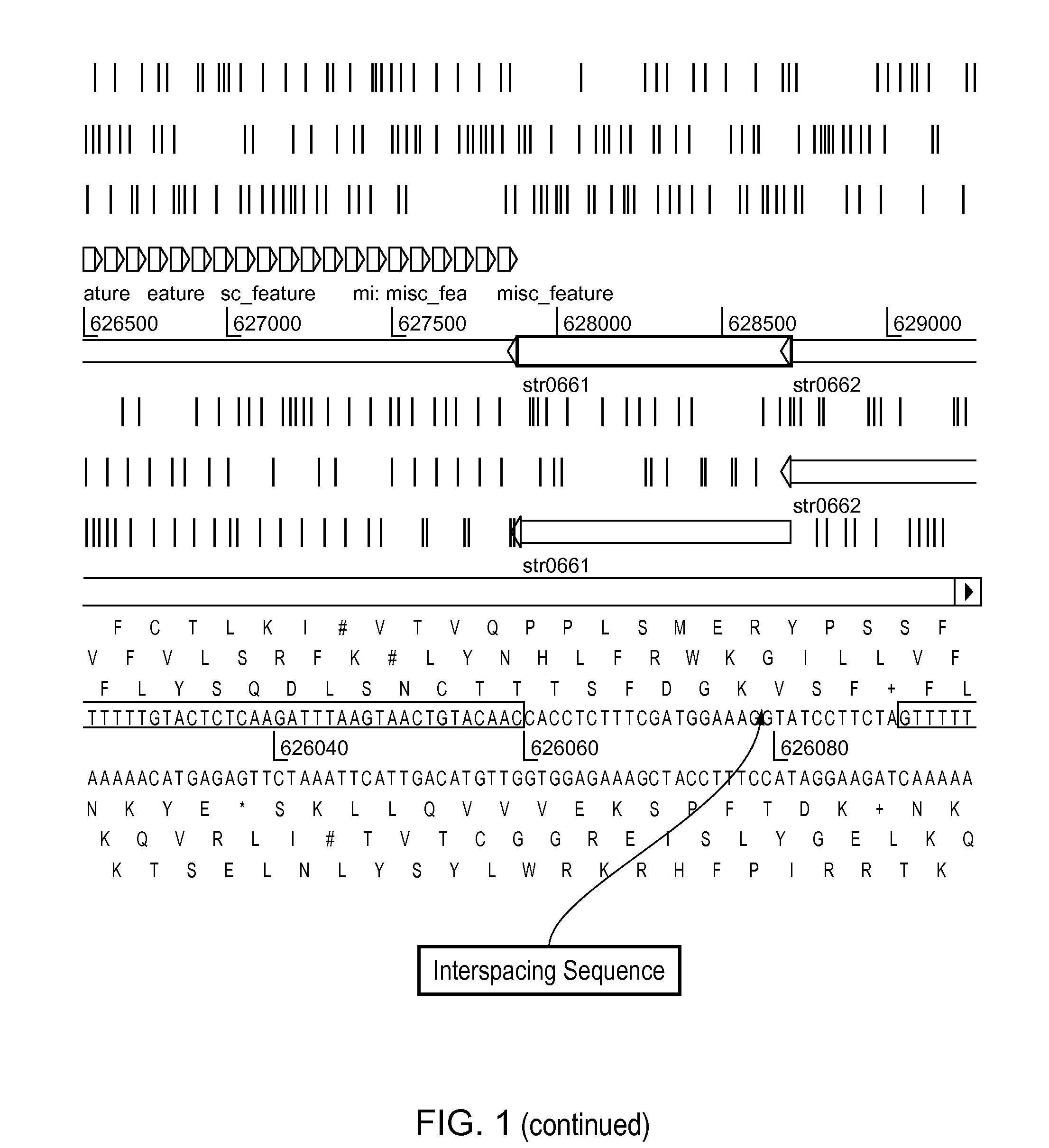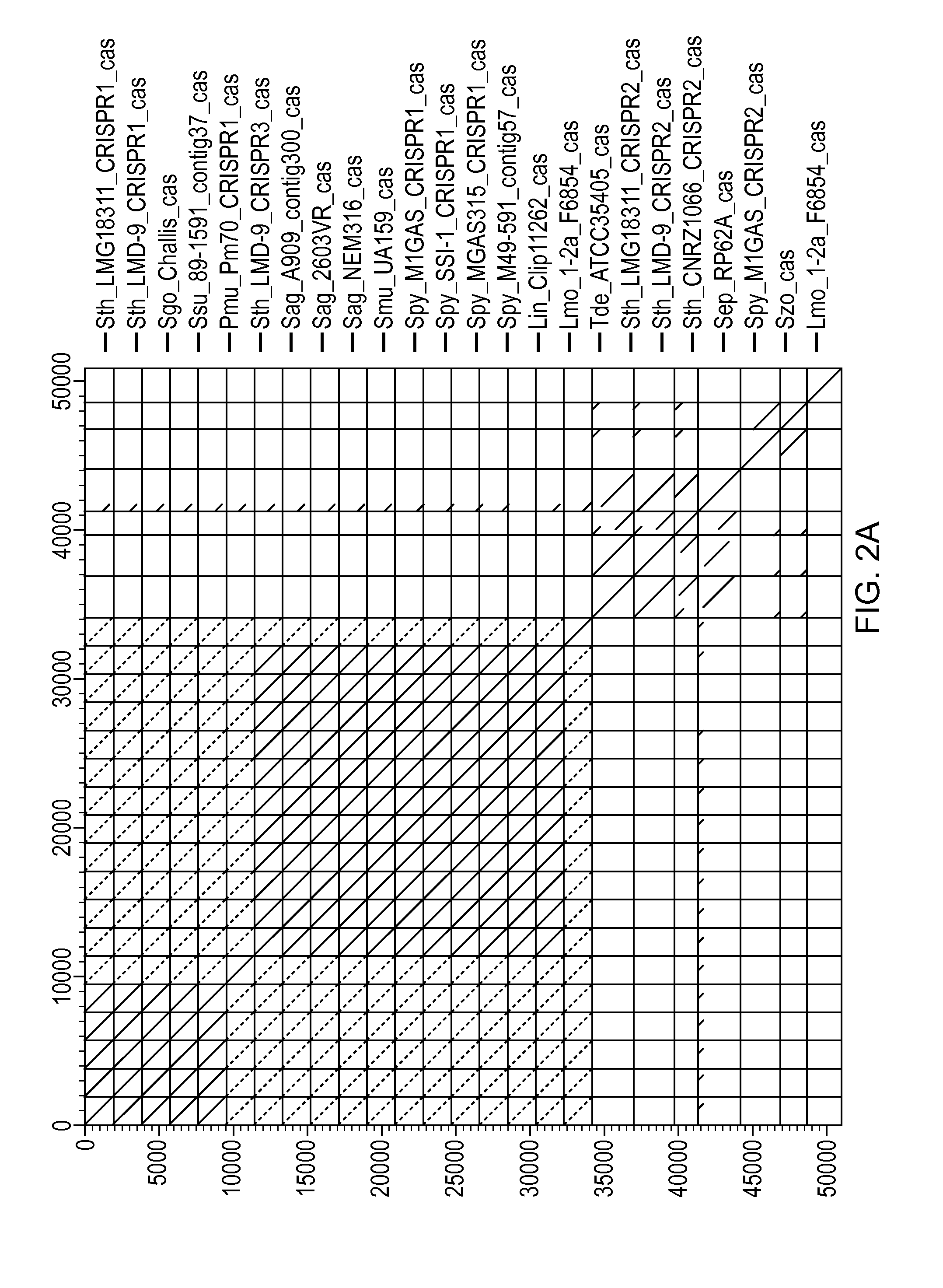Use
a technology of cell resistance and module, which is applied in the field of module resistance of cells, can solve the problems of occupying a large space and equipment, phage contamination, and high risk of spoilage bacteria and/or phages, and achieves the effect of reducing the degree of homology to the spacer
- Summary
- Abstract
- Description
- Claims
- Application Information
AI Technical Summary
Benefits of technology
Problems solved by technology
Method used
Image
Examples
example 1
[0639]Insertion of a phage specific spacer into an existing, functional CRISPR to provide resistance to the corresponding phage.
Strain—Streptococcus thermophilus ST0089
Phage—2972
[0640]Streptococcus thermophilus ST0089 is an industrially important strain used in the manufacture of yogurt, is genetically amenable to manipulation, and susceptible to virulent phage 2972. The full genome sequence for phage 2972 was recently determined.
[0641]The CRISPR loci is determined in strain ST0089. This is determined preferentially by sequencing the entire genome of ST0089. Alternatively, the CRISPR loci is identified via PCR using primer sets with sequences identical to S. thermophilus CRISPR elements previously identified.
[0642]Once identified, the CRISPR loci sequence is determined as well as the proximal regions which should contain the relevant cas genes.
[0643]At least one particular CRISPR-cas locus is selected for further manipulation. Functionality of this locus is ascertained through in si...
example 2
[0651]A spacer homologous to a phage DNA is inserted into a cell—such as recipient cell. The cell becomes resistant to the phage. In a CRISPR locus within the selected strain, a new CRISPR spacer is designed from phage DNA (with 100% identity to phage DNA) within the anti-receptor gene and inserted into the cell. The anti-receptor gene is targeted because CRISPR spacers from other strains have been found to show similarity to phage anti-receptor genes. Four strains bearing spacers showing identity to phage anti-receptor genes are resistant to the particular phage. The mutant is exposed to phage and it becomes resistant to it.
example 3
[0652]A plasmid comprising a CRISPR spacer is prepared, and we show that this plasmid cannot be transferred into a cell that contains the same spacer, whereas the plasmid without the spacer can be transformed into the cell.
PUM
| Property | Measurement | Unit |
|---|---|---|
| resistance | aaaaa | aaaaa |
| constant length | aaaaa | aaaaa |
| cellular structure | aaaaa | aaaaa |
Abstract
Description
Claims
Application Information
 Login to View More
Login to View More - R&D
- Intellectual Property
- Life Sciences
- Materials
- Tech Scout
- Unparalleled Data Quality
- Higher Quality Content
- 60% Fewer Hallucinations
Browse by: Latest US Patents, China's latest patents, Technical Efficacy Thesaurus, Application Domain, Technology Topic, Popular Technical Reports.
© 2025 PatSnap. All rights reserved.Legal|Privacy policy|Modern Slavery Act Transparency Statement|Sitemap|About US| Contact US: help@patsnap.com



